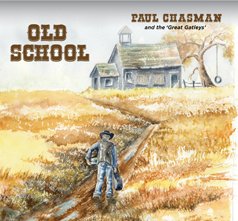Categories – September 4, 2001
 One of the most difficult questions people ask
me is: “How do you categorize your music?” While
I have had plenty of practice answering this question, I still stumble,
fumble, and mumble something like, “Well...in the forty years
I have played guitar, I have played blues, bluegrass, rock, ragtime,
jazz, and classical. My music is influenced by all of those styles,
but it’s not any of them...it’s just my own music.” Well,
that clears that up, doesn’t it?
One of the most difficult questions people ask
me is: “How do you categorize your music?” While
I have had plenty of practice answering this question, I still stumble,
fumble, and mumble something like, “Well...in the forty years
I have played guitar, I have played blues, bluegrass, rock, ragtime,
jazz, and classical. My music is influenced by all of those styles,
but it’s not any of them...it’s just my own music.” Well,
that clears that up, doesn’t it? Music used to be regional. J.S. Bach never left his native Germany, and it was many years before his mighty repercussions were felt throughout Europe, and still longer before his music spread across the world. Celtic music was played in Ireland. Bill Monroe brought bluegrass out of Kentucky and barnstormed the South. Delta Blues came from the Mississippi Delta, and it was distinguished from Texas Blues, which was different from Chicago Blues. Jazz was born in New Orleans. All of the above styles were hybrids of earlier influences, but compared to today, cultures were isolated, and so was their music.
Now, of course, the world is small. We can travel anywhere with relative ease, we interact globally via the media and Internet in a matter of seconds, and we are becoming a more racially and culturally homogenized planet. It follows that our music will become more integrated. Most of us have been exposed to many musical styles. Even if you are not an engaged listener, all you need to do is flip through your radio dial or go to a few movies, and you may get a sense of the vast variety of music that invades our consciousness.
It is natural for a composer to draw from all of these sources. An artist expresses thoughts and feelings, guided by knowledge and experience. Once the composer has absorbed a new musical language, it would require a lot of effort to ignore the influence simply because it does not fit a preconception of his or her style. We draw from everything we know, and each of us recycles it in our own unique way.
I want to distinguish between what are known as “hybrid” musicians and “crossover” musicians. I think of a “cross-over” as someone like Wynton Marsalis, who is equally accomplished in jazz and classical music. Another example is David Krakauer, who began as a classical clarinetist and has now turned his virtuosity to Klezmer music. Artists like these have embraced diverse musical languages and are exploring each one fully, but without integrating them.
Although I have spent many years immersing myself in one musical style or another, I guess I am now a “hybrid” musician (sounds better than “mongrel”). I use sounds, techniques, and ideas that appeal to me to create my own music. Someday, musicologists may look back and trace the new forms of music that began to evolve out of this period of cultural integration, and they will probably give them names. For now, all I can say is, “Well...over the years I have played blues, bluegrass, rock, ragtime, jazz, and classical. The music I compose is influenced by all of them, but it’s not any of them. It’s just my music.”
September 5, 2001

